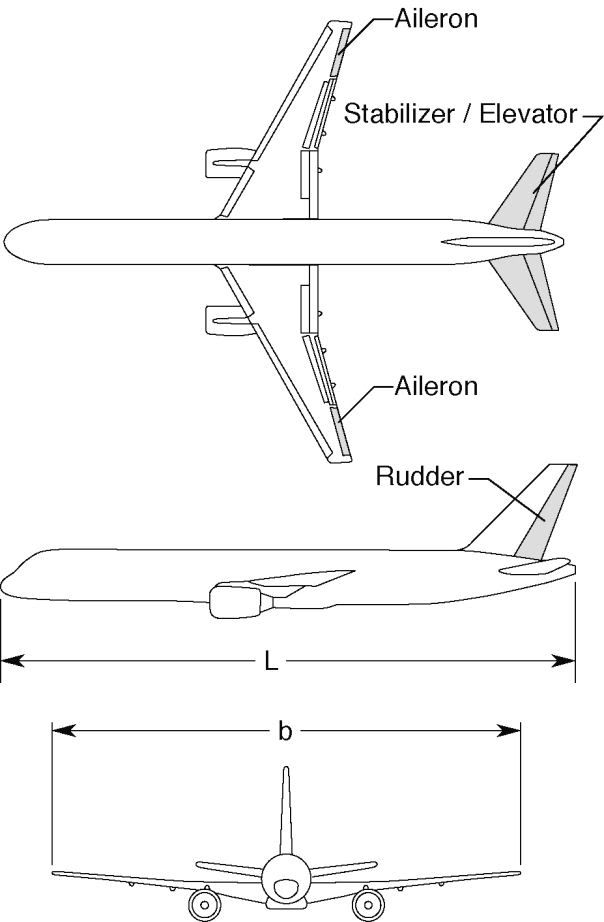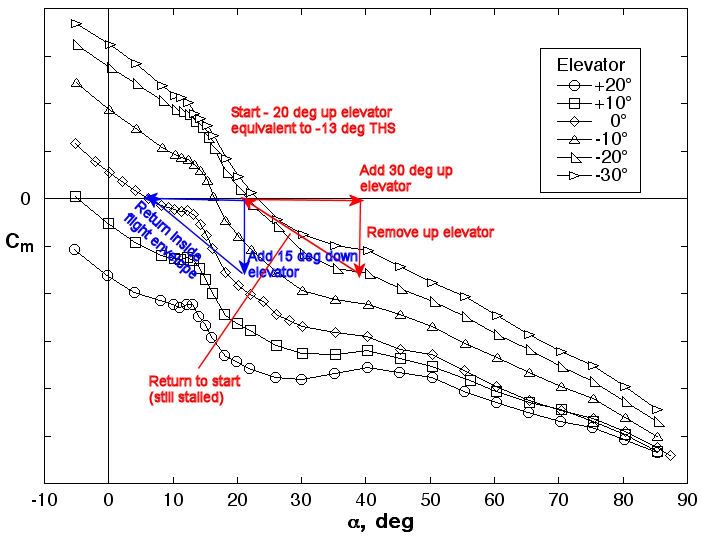Back to impersonal matters

There has been a lot of debate on whether the aircraft could have been recovered from the stall and if so how much height would have been needed. I think what has been missing is not so much a question whether it could have been brought back inside the flight envelope but a recognition that it was actually held in the stall by pilot action and that the first stage of recovery would have been simply to remove the up elevator by relaxing on the sidestick.
This would not have been sufficient by itself, but would have removed any doubts about the efficacy of down elevator, application of which would have further reduced the AoA and brought the THS back towards 3 deg NU rather than 13 deg.
I hope what follows is not too confusing, but the graph, which is taken from the AIAA/NASA/Boeing report on upset recovery is as near as Gums is going to get to pitching moment curves for the A330. Looking at the model test geometry it is difficult to see anything that would make these curves substantially different from the A330. Even so, treat them as qualitative not quantitative.
>


">
On the zero elevator line you can see the typical mild pitch up near the stall that I mentioned in an earlier posting.
For the tail geometries typical of modern civil designs, the relative pitching power of THS and elevator would be about 1deg THS equivalent to 1.5 deg elevator. So for a THS set at -13 deg we can read these curves at about 20 deg up elevator to get a feel for things. This would take us up to a trimmed AoA (Cm = 0) of just over 20 deg. However, if you add 30 deg up elevator, you would end up at just over 40 deg AoA, which is pretty similar to AF447 in the same state. So to get to the high AoAs we see from the DFDR data, it looks like you
have to be holding full back stick as well as having the THS at -13 deg.
If you now return the stick to neutral at this elevated AoA you get a substantial nose down pitching moment which will take the aircraft back towards sanity.
But it will not take it the whole way – just back to the AoA set by the THS angle.
To get back inside the flight envelope you
MUST apply some down elevator, which will give another substantial recovery pitching moment but also will, with the A330 logic, start to return the THS back to its cruise setting of -3 deg.
To get an idea how much height loss is involved, you can approximate by a simple energy height trade and a pull-up. Simple geometry says that this latter is surprisingly small. Obviously it depends on the steepness of the descent, the airspeed and the amount of ‘g’ one can pull. This last item also depends on the airspeed. It isn’t any good accelerating to Vs1g because there is no spare lift for the pull-up. To get a reasonable ‘g’, say a 0.5g increment, you need to accelerate to 1.23Vs. Starting from a 20 deg dive the pull-up with that ‘g’ will take about 500 ft altitude.
Starting from 100 kts CAS at 34000 ft and accelerating to say 240 kts CAS at about 28000 ft you need to accelerate from around 300 ft/sec TAS to about 650 ft/sec TAS, which equates to a height loss of just over 5000 ft. Add the 500 ft for a pull-up and in round figures you should be able to recover in 6000 ft altitude.
On that analysis the aircraft WAS recoverable from the stall, but it would have required a definite and sustained nose down elevator application that never materialised – in fact, despite Bear’s latest remarks, DOWN elevator was never applied, just a relaxation of the up elevator
As I said, treat this as a qualitative explanation of what the aerodynamics are likely to have been. Looks quite reasonable to me though